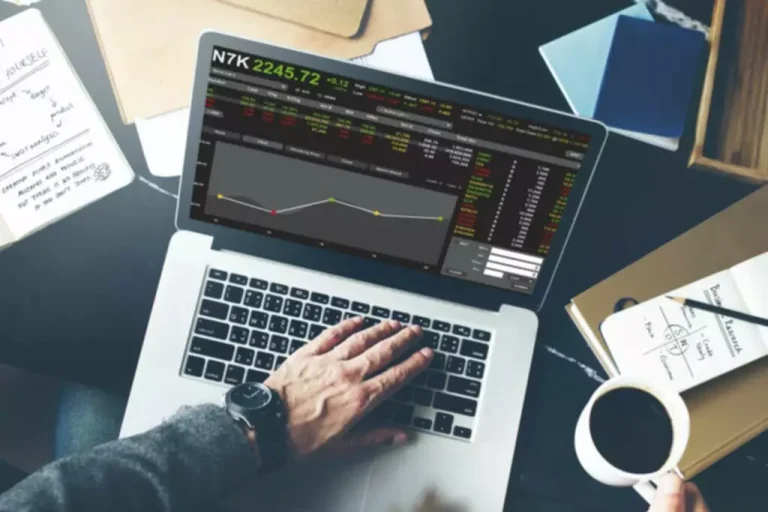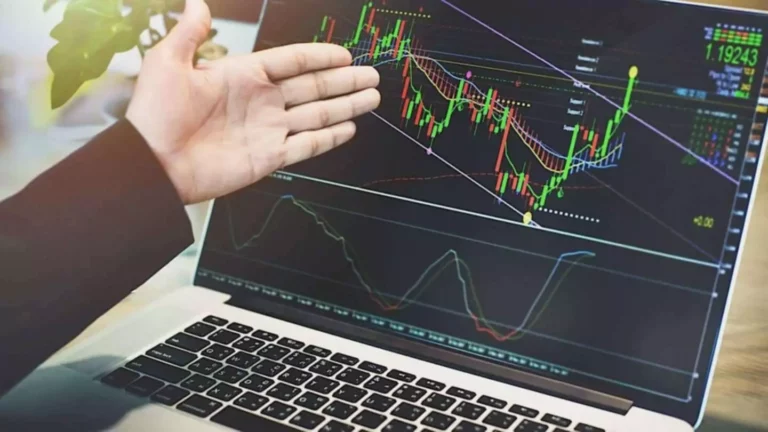And if you do not know what I mean then see the linked idea below ‘the study’. Now the market cap is way to small for my interest but it might appeal to someone or indeed someone who is interested in the long game. The reversal bullish falling wedge pattern pattern is one we see play out time and time again in all markets. We will help to challenge your ideas, skills, and perceptions of the stock market. Every day people join our community and we welcome them with open arms.
- Traders recognize the rising wedge as a consolidation phase after a medium to…
- Our chat rooms will provide you with an opportunity to learn how to trade stocks, options, and futures.
- Our watch lists and alert signals are great for your trading education and learning experience.
- A wedge pattern is a type of chart pattern that is formed by converging two trend lines.
- Then, superimpose that same distance ahead of the current price but only once there has been a breakout.
This can be seen frequently when day trading; when previous resistance becomes support and vise versa. Helps identify the ranges in which the stock is trading in. They can also be part of a continuation pattern but not matter what it’s always considered bullish.
How can I accurately trade a Falling Wedge pattern?
They can offer an invaluable early warning sign of a price reversal or continuation. Knowing how and why the falling wedge pattern forms are essential to learning how to trade it. Another notable characteristic of a falling wedge is that the upper resistance line tends to have a steeper descending angle than the lower support line. In the today’s post, we will discuss accurate bullish price action patterns that you can apply for trading any financial instrument. 1️⃣Bullish Flag Pattern
Such a pattern appears in a bullish trend after a completion of the bullish impulse. When trading this pattern it is important to have confirmation of the breakout so it does not get the trader caught in a trap.

To limit potential loss when price suddenly goes in the wrong direction, consider placing a stop order to sell at or below the breakout price. As you can see, the price came from a downtrend before consolidating and sketching higher highs and even higher lows. Trading financial products carries a high risk to your capital, particularly when engaging in leveraged transactions such as CFDs. It is important to note that between 74-89% of retail investors lose money when trading CFDs. These products may not be suitable for everyone, and it is crucial that you fully comprehend the risks involved. Prior to making any decisions, carefully assess your financial situation and determine whether you can afford the potential risk of losing your money.
Overall guidelines to identify the pattern
As with the rising wedges, trading falling wedge is one of the more challenging patterns to trade. A falling wedge pattern indicates a continuation or a reversal depending on the current trend. In terms of its appearance, the pattern is widest at the top and becomes narrower as it moves downward. It is a bullish pattern that starts wide at the top and contracts as prices move lower. This price action forms a cone that slopes down as the reaction highs and reaction lows converge.

Of course, 30k will follow, but 29k is a strong resistance, and we should see a pullback from it! Watch this yellow trendline, which is a gateway to the ultra-huge bull market. Once it breaks, I expect a massive uptrend, but be aware of a possible retest first. Since both of these apply to symmetrical triangle patterns, depending on the case, this pattern can show as a bullish or a bearish trend. Before the line converges the buyers come into the market and as a result, the decline in prices begins to lose its momentum.
Is a Rising Wedge Pattern Bullish or Bearish?
Traders can look to the beginning of the descending wedge pattern and measure the peak to trough distance between support and resistance to spot the pattern. If the rising wedge forms after an uptrend, it’s usually a bearish reversal pattern. A rising wedge in an up trend is usually considered a reversal pattern.
Crypto Predictions: What’s in Store for October 2023? – BeInCrypto
Crypto Predictions: What’s in Store for October 2023?.
Posted: Wed, 04 Oct 2023 09:44:59 GMT [source]
The falling wedge pattern is seen as both a bullish continuation and bullish reversal pattern which gives rise to some confusion in the identification of the pattern. Both scenarios contain different market conditions that must be taken into consideration. Conservative traders, on the other hand, will generally wait for price to retest the upper resistance line from above before they will execute a long trade. Just keep in mind though, that a retest of the breakout level might not always happen and result in a trader missing an entry. Are you ready to unlock the secrets of the rising wedge pattern in the thrilling world of forex trading?
Trading the Falling Wedge Pattern
They push traders to consider a falling market as a sign of a coming bullish move. But in this case, it’s important to note that the downward moves are getting shorter and shorter. This is an indication that bullish opinion is either forming or reforming. A rising wedge is formed when the price consolidates between upward sloping support and resistance lines.
Explore the world of cash back rewards, from credit cards to apps, and uncover the truth behind this enticing financial perk. Discover how to make the most of cash back while avoiding potential pitfalls. Trade over 4,000 Forex, Stock Indices, CFD Shares (ASX & International), Commodities (Energy & Metals) and Crypto markets. Invest in over 3,100 ASX Stocks and ETFs, get HIN protection (CHESS), free live data, and 24/7 live chat and phone trade support.
Recognizing the falling wedge pattern
In an uptrend, the falling wedge denotes the continuance of an uptrend. Wedge patterns are frequently, but not always, trend reversal patterns. The rising wedge in an uptrend indicates a reversal of the downtrend. It is formed when the prices are making Higher Highs and Higher Lows compared to the previous price movements.





























































